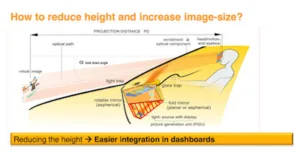In case you missed the Auto display business conference at Display week (Yikes, nearly 3 months ago!) Continental devoted a good portion of its presentation time to introducing its new DigiLens waveguide powered HUD system. In fact, in a strong show of support, the presenter at Display Week was n Dr. Pablo Richter, principal technical expert, optical technologies, from Continental.

The Silicon Valley start-up works with Continental, the EU technology giant that focuses (among other things) on next generation gadgets for BMW, Daimler Benz and Audi to name a few. The company tapped DigiLens back in 2016 (see our coverage link below) to help with some of the more complex issues holding back windscreen HUDs from the mainstream car market.
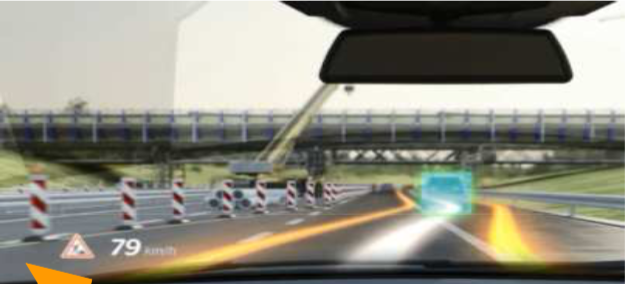 AR HUDs of the future will project images showing driver where they need to go, Source: Continental
AR HUDs of the future will project images showing driver where they need to go, Source: Continental
While HUD technology has been around since the 1980’s, the need to conform to complex windscreen geometries kept module volumes low and component costs high, relegating HUD displays to the niche luxury car market. But well beyond cost, the competition for precious space inside the vehicle cockpit is another bottleneck in moving toward auto HUD display ubiquity.
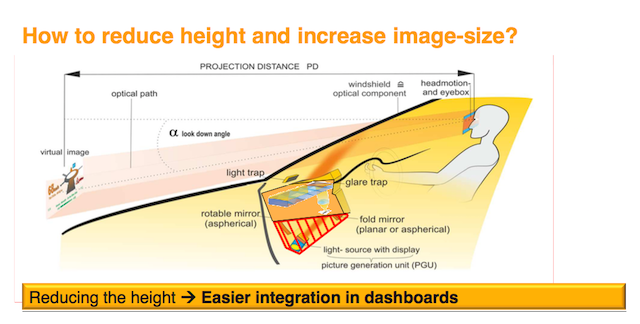 From SID Display Week Auto Business Conference May 2017, Source: Continental
From SID Display Week Auto Business Conference May 2017, Source: Continental
Limited cockpit volume kept the HUD objects small and distance limited. The optics are directly proportional to component volume. Further, the demand for more advanced HUD systems is growing with present day requirements moving toward HUD-based augmented reality systems. Next generation AR HUD systems are being developed to throw AR images for the driver, (like navigation turn arrows) directly on to the image of the approaching street where the turn is executed. But to deliver this using a conventional windscreen HUD will require a dramatic increase in component volume. For example new prototype windscreen HUD’s using conventional technology have seen component package volume grow 3X, according to the presentation, from current sizes of 3 liters up to 15 liters.

Cue DigiLens. Richter called the waveguide technology “disruptive” in his presentation at the conference, stating that the waveguide approach delivers “Large Images for AR-HUDs in small Packaging Sizes, and Enables new flat dashboard-designs.” To get there, the DigiLens solution eliminates the need for foil inside the windshield, delivers very high diffraction efficiency due to its high index-modulation. The “compact” waveguide replaces the complex optical set-up of mirrors.
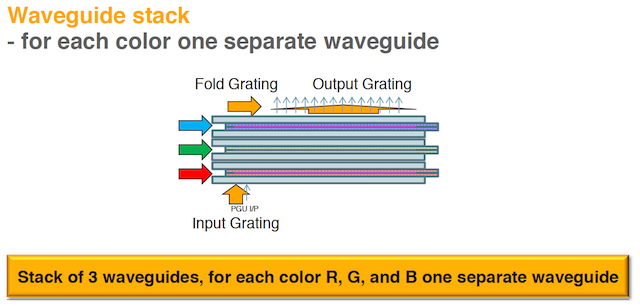
So, with the promise of large images for AR-HUDs from a small package volume, saving precious space inside the dash (particularly near the driver information display), and delivered at a price (OK eventually with volume manufacturing) we may indeed be at the advent of automotive HUD ubiquity. The far reaching benefits go well beyond the HUD coolness factor as critical situation awareness data is delivered in a non-distracting way–and that can save lives. –Stephen Sechrist
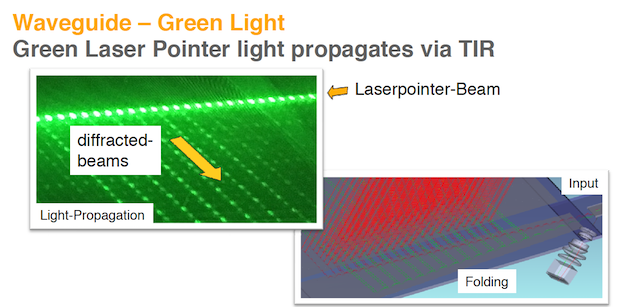
DigiLens Secures $22M from Key Strategic Partners
Continental to Work with DigiLens in Automotive AR
Continental Speeds up Evolution of AR Head-up Displays through Strategic Partnership with DigiLens

